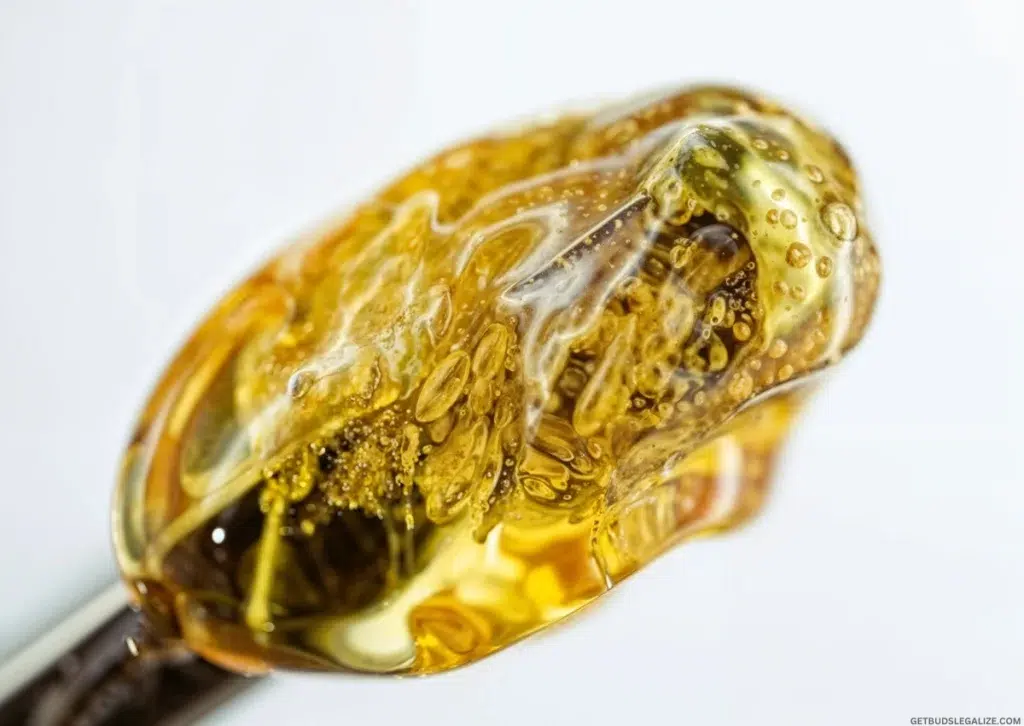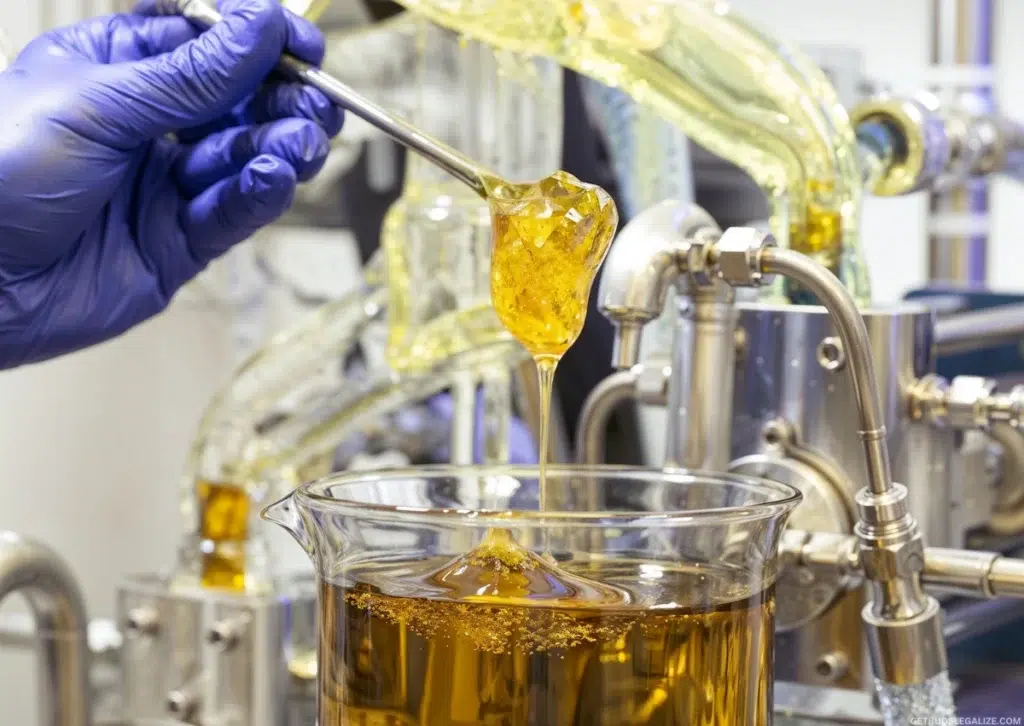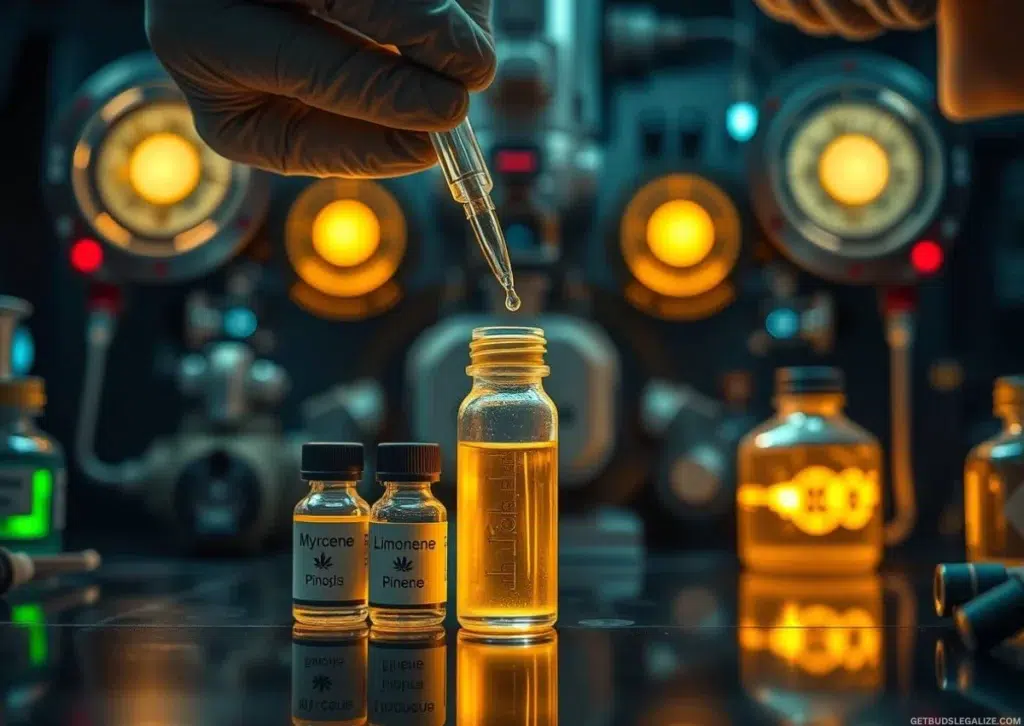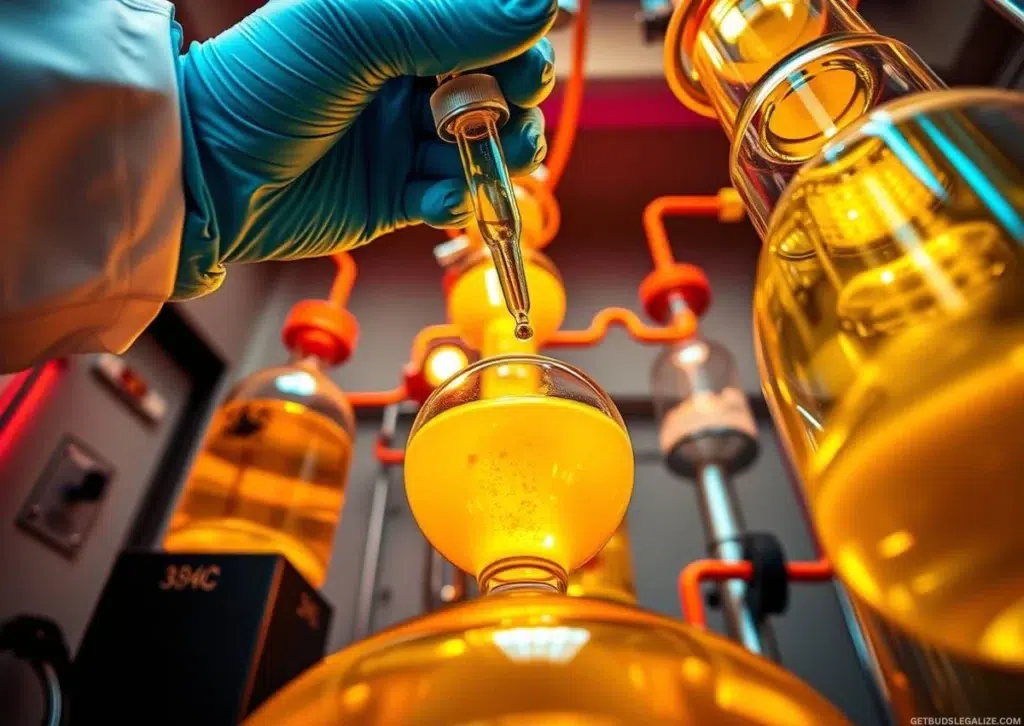How to Make Cannabis Distillate at Home: Step-by-Step Professional Guide
Learn how to make high-purity THC or CBD distillate at home using professional-grade methods. This detailed guide covers the full cannabis distillation process—from raw plant material to final terpene-infused product—perfect for hobbyists and professionals alike.
Cannabis distillate offers unmatched purity and versatility, ideal for vape cartridges, edibles, tinctures, topicals, and more. Follow this expert step-by-step tutorial to produce clean, potent concentrates safely and efficiently.
Table of Contents
- What Is Cannabis Distillate?
- Why Use Distillates Instead of Other Extracts?
- How Does Cannabis Distillation Work?
- How to Prepare Cannabis for Distillation (Drying, Curing, and Testing)
- Common Initial Extraction Methods
- Step-by-Step Guide: Producing Cannabis Distillate at Home or in a Lab
- Essential Cannabis Distillation Equipment
- How to Enhance Distillate Quality
- Troubleshooting Common Issues (Quick Reference Table)
- Safety Guidelines and Legal Disclaimer
- Final Thoughts and Resources
- Frequently Asked Questions (FAQ)

What Is Cannabis Distillate?
Cannabis distillate is a purified cannabis extract that isolates specific cannabinoids like THC or CBD through fractional distillation. These products can reach purities as high as 99%, making them among the most potent cannabis concentrates available.
Unlike live resin or hash oil, distillates are stripped of almost all terpenes and flavonoids during distillation. However, you can add these back in later to customize flavor and therapeutic effects.
Related Article:
Why Use Distillates Instead of Other Extracts?
- Unmatched Purity: Ideal for medical formulations or ultra-clean recreational products.
- Flavor Flexibility: Add your own terpene profiles post-distillation for customized taste and aroma.
- Versatile Applications: Use in vape cartridges, edibles, tinctures, topicals, and more.
- Standardization: Enables consistent potency and dosing, critical for commercial production and quality control.
How Does Cannabis Distillation Work?
Cannabis distillation uses fractional distillation under vacuum pressure, a technique borrowed from chemical refining, to separate cannabinoids based on their boiling points.
Key Boiling Points of Cannabinoids:
| Cannabinoid | Approximate Boiling Point (°C) |
| THC | ~157 |
| CBD | 160–180 |
| CBN | ~185 |
By carefully controlling vacuum pressure and temperature, each cannabinoid vaporizes and condenses separately, leaving behind unwanted compounds and impurities.
How to Prepare Cannabis for Distillation (Drying, Curing, and Testing)

Step 1: Choosing the Right Raw Material
Start with clean, potent cannabis. Select biomass with high cannabinoid and terpene content, free from mold, pesticides, and heavy metals.
Step 2: Drying & Curing
- Harvest cannabis at peak maturity to capture full cannabinoid and terpene profiles.
- Dry the plant material to reduce moisture and prevent microbial growth.
- Cure dried buds properly to break down sugars, enhancing flavor and potency.
- Trim buds and test potency and contaminants in a certified lab.
Common Initial Extraction Methods
Before distillation, cannabinoids must be extracted into a crude oil. Here are the most popular extraction techniques:
- CO2 Extraction: Clean, safe, and uses supercritical CO2 as a solvent.
- Ethanol Extraction: Efficient and scalable, though it may extract chlorophyll, requiring further cleanup.
- Hydrocarbon Extraction: Uses butane or propane for high yields, but involves flammability risks and requires careful handling.
Expected Yields:
Yields vary by method and quality of starting material, typically ranging from 10–25%.
Step-by-Step Guide: Producing Cannabis Distillate at Home or in a Lab

Step 1: Initial Extraction
- Purpose: Separate cannabinoids and terpenes from the plant material to create crude oil.
- Methods: Use a CO₂ extractor, ethanol, or hydrocarbon-based system.
- Note: Always start with contaminant-free, lab-tested biomass to ensure product safety and quality.
Step 2: Winterization
Dissolve the crude oil in ethanol and chill it to –20°C or lower for 24–48 hours. This crystallizes unwanted fats, waxes, and lipids.
After chilling, filter out the solidified impurities.
- Why it matters: Winterization enhances clarity, stability, and overall purity of the extract.
Step 3: Decarboxylation
Heat the winterized oil at controlled temperatures to activate cannabinoids (e.g., THCA → THC, CBDA → CBD).
- Purpose: Converts inactive acidic cannabinoids into their active, bioavailable forms.
- Essential for: Producing psychoactive effects and ensuring potency in final products.
Step 4: Distillation
Utilize short path or wiped film distillation under vacuum conditions to separate and purify cannabinoids.
By targeting specific boiling points, you vaporize cannabinoids and condense them into a highly potent, clear distillate.
- Outcome: A refined oil free of chlorophyll, terpenes, solvents, and other residual compounds.
Step 5: Cannabinoid Isolation (Optional)
To isolate pure THC, CBD, or minor cannabinoids, apply chromatography or perform multiple rounds of distillation.
Use case: Precision formulations, pharmaceutical applications, or high-purity product lines.
Essential THC Distillation Equipment Needed
Entry-Level Setup:
| Equipment | Description | Estimated Cost |
| Boiling Flask | Holds crude oil for heating | $100–$300 |
| Heating Mantle | Provides precise temperature control | $150–$400 |
| Distillation Head | Connects boiling flask to condenser | $200–$400 |
| Condenser | Cools vapor back to liquid | $100–$300 |
| Receiving Flask | Collects purified distillate | $50–$150 |
| Vacuum Pump | Reduces pressure to lower boiling points | $300–$800 |
* Total Entry-Level Cost: Approximately $500–$1,500
Industrial-Scale Equipment
Commercial operations often use advanced systems like those from Root Sciences, including rotary evaporators, deep vacuum pumps, and chillers.
| Equipment | Purpose | Cost Range |
| Rotary Evaporator | Solvent recovery | $10,000–$50,000 |
| Deep Vacuum Pumps | Maintain strong vacuum | $5,000–$20,000 |
| Chillers | Maintain condensation temps | $5,000–$15,000 |
How to Enhance Cannabis Distillate Quality

Techniques for Higher Purity
- Multiple Passes: Redistill to remove residual impurities.
- Tight Temperature Control: Avoid cannabinoid degradation.
- Deep Vacuum: Lowers boiling points and preserves sensitive compounds.
- Wiped Film Distillation: Offers faster, more precise separation, especially for larger batches.
Terpene Reintroduction
- Extract terpenes at low temperatures (<150°C).
- Store terpenes in airtight, UV-protected containers.
- Reintroduce terpenes after distillation using gentle heat (<140°C).
- Experiment with blends (e.g., 5% limonene, 3% myrcene) to customize flavor and entourage effects.
Troubleshooting Common Issues
| Problem | Symptoms | Likely Cause | Solution |
| Vacuum Leak | Boiling point fluctuations, discoloration | Loose seals, worn O-rings | Reseat joints, apply vacuum grease, test system |
| Low Yield | Unexpectedly low or variable output | Poor biomass, inconsistent process | Verify starting material, standardize extraction |
| Residual Solvents | Harsh taste, failed lab tests | Incomplete solvent removal | Use rotary evaporator or vacuum oven, extend purge |
| Low Purity | Cloudy, off-color, weak potency | High temp, fast distillation | Slow distillation, deeper vacuum, repeat cycles |

Safety Guidelines and Legal Disclaimer
Working with cannabis distillation involves high temperatures, vacuum pressures, and flammable solvents. Always:
- Train all personnel on standard operating procedures (SOPs) and emergency protocols.
- Use personal protective equipment (PPE): lab coats, gloves, goggles.
- Maintain proper ventilation and fire safety equipment nearby.
- Inspect and maintain all equipment regularly.
⚠️ Disclaimer: This guide is intended for educational purposes only. Cannabis extraction and distillation may be regulated or illegal in your area. Always comply with local laws and regulations. Consult professionals before attempting distillation at home.
Final Thoughts and Resources
Creating cannabis distillate is a rewarding process that, when done properly, yields a versatile, high-potency concentrate perfect for a wide range of applications.
With the right equipment, clean materials, and expert techniques, you can craft consistent, high-quality distillate—whether you’re a serious hobbyist or running a professional operation.
📩 Want pro tips, SOP templates, and gear reviews? Subscribe to our newsletter or follow us on our social media.
Frequently Asked Questions (FAQ) — How to Make Cannabis Distillate at Home
Cannabis distillate is a highly purified cannabis concentrate produced through fractional distillation. Unlike extracts such as live resin or hash oil, distillates contain up to 99% pure cannabinoids (THC, CBD) with minimal terpenes or impurities. This makes distillates ideal for creating clean, potent products with consistent potency and customizable flavor profiles.
Yes, it is possible to make cannabis distillate at home if you have the proper equipment, knowledge, and safety precautions. However, working with high temperatures, vacuum pumps, and flammable solvents requires strict adherence to safety protocols. Always ensure your local laws permit home extraction and distillation before proceeding.
At minimum, you’ll need:
- A heating source with precise temperature control (heating mantle or hot plate)
- Boiling and receiving flasks
- A distillation head and condenser
- A vacuum pump to lower the boiling points
- Filtration setup for winterization
- For professional or commercial setups, rotary evaporators and wiped film distillation units are common.
Begin with premium, lab-tested cannabis biomass. Proper drying and curing are critical to retain cannabinoid and terpene integrity. After harvesting, thoroughly dry the material to prevent mold and microbial growth. Cure the buds to enhance flavor and potency, then conduct lab testing to ensure the absence of contaminants such as pesticides, mold, and heavy metals before proceeding with extraction.
Winterization removes fats, waxes, and lipids from the crude cannabis extract. By mixing the crude oil with ethanol and chilling it below freezing, unwanted components solidify and can be filtered out, resulting in a cleaner, clearer distillate with improved purity.
Decarboxylation is the process of heating the cannabis oil to convert inactive acidic cannabinoids (THCA, CBDA) into their active forms (THC, CBD). This step is crucial for making cannabinoids bioavailable and effective for consumption.
- High potency and purity: Up to 99% cannabinoid concentration
- Flavor customization: Terpenes can be added post-distillation for unique profiles
- Versatility: Suitable for vape cartridges, edibles, tinctures, and topicals
- Consistency: Reliable dosing and effects, ideal for medical and commercial use
Since distillates lose most terpenes during distillation, producers often reintroduce terpenes extracted separately at low temperatures. Adding terpene blends post-distillation lets you customize aroma, taste, and entourage effects.
- Vacuum leaks: Check seals, O-rings, and joints; use vacuum grease
- Low yield: Use high-quality biomass and standardize extraction procedures
- Residual solvents: Use proper winterization, rotary evaporation, or vacuum ovens to purge solvents
- Cloudy or off-color distillate: Avoid overheating; perform multiple distillation passes if needed
Legal regulations vary widely by location. In many regions, home cannabis extraction and distillation are restricted or prohibited. Always verify local laws before attempting any extraction and comply with all safety and legal requirements.
Cannabis distillate is generally safe to consume when it is produced properly and tested for purity. However, safety depends on several key factors:
✅ What Makes It Safe:
- Lab Testing: Reputable products are tested for pesticides, residual solvents, heavy metals, and potency.
- Clean Production: Proper distillation under controlled conditions removes impurities and harmful compounds.
- Consistent Dosing: Its purity allows for accurate dosing, especially important for medical use.
⚠️ Risks to Watch For:
- Contaminated Inputs: Poor-quality biomass or crude oil can carry over harmful substances.
- Unregulated Products: DIY or black-market distillates may contain residual solvents or additives.
- High Potency: With THC levels up to 99%, overconsumption can lead to anxiety, paranoia, or other adverse effects, especially for new users.
- Short path distillation: Suitable for small-scale, slower processing with moderate yields
- Wiped film distillation: Faster, continuous processing with higher throughput and greater purity, commonly used in commercial operations
Yes, the distillation process is similar for both THC and CBD. The main difference lies in the starting material—THC-rich cannabis vs. CBD-rich hemp—and the precise temperature settings during distillation to isolate each cannabinoid optimally.
Yields depend on extraction methods and starting material quality, but typically range between 10% and 25% of the biomass weight. Proper technique and high-quality biomass improve yield and purity.
Terpene blends are available from specialized suppliers online and often come labeled with profiles like citrus (limonene), earthy (myrcene), or floral (linalool). Experimenting with small batches is recommended to find your preferred flavor and effect combinations.
Store distillate in airtight, UV-resistant containers away from heat, light, and oxygen to preserve potency and flavor. Refrigeration or freezing can extend shelf life, but avoid frequent temperature changes to prevent condensation.
ILGM Fertilizer:
Feed Your Plants Right

The Ultimate Cannabis Fertilizer – designed to fuel every stage from seedling to harvest.
✅ Feeds 5+ plants
✅ Big savings with bundle
✅ Works in soil, coco, or hydro
✅ Supports bigger, healthier yields
ILGM Plant Protector:
Ultimate Cannabis Protection

Shield your plants from pests and disease—naturally and effectively.
Protect From Seedling to Harvest
✅ Protects up to 20 plants
✅ Works in soil, coco, or hydro
✅ Fights pests & diseases fast
✅ Keep your grow healthy & stress-free
























